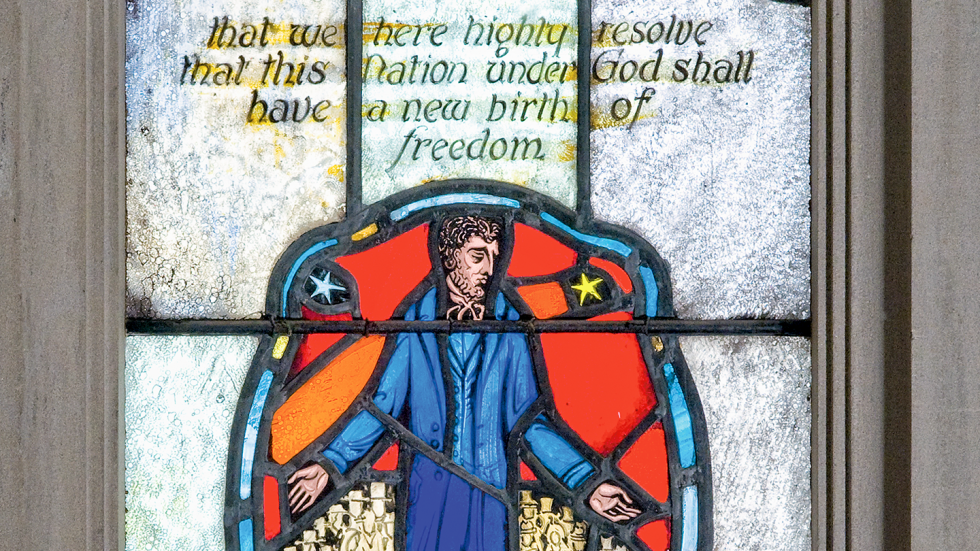The Making of Sean M. Decatur
Biochemist and Beatles aficionado, Kenyon's new president grew up with the lessons of learning.
Read The StoryFor a limited edition book several years ago, the College asked Kenyon professors to reflect on some of the literary scenes and passages depicted in the famous stained glass windows of Peirce’s Great Hall. Professor Emeritus of History William B. Scott offered these thoughts on the windows devoted to the Gettysburg Address.

The central panel . . . features Abraham Lincoln, the Great Emancipator, with the phrase . . . “this Nation, under God, shall have a new birth of freedom” emblazoned above his head. Encircling the president are the nation’s people, including farmers, artisans, shopkeepers, women as well as men, Native Americans, and emancipated slaves. One can read a message for Kenyon here. Lincoln’s presence reminds us of the great Civil War-era figures who were Kenyon alumni. Moreover, . . . the College, too, would eventually undergo a new birth in the spirit of Lincoln’s democratic vision. Women would arrive, as would greater numbers of students more fully representing the diversity of American society. In this iconic Kenyon building, circled round by towering figures in the English literary tradition, we have an image of the College reaching beyond its English roots to fulfill the promise of universal democracy articulated in the Gettysburg Address.
Biochemist and Beatles aficionado, Kenyon's new president grew up with the lessons of learning.
Read The StoryKenyon's first females graduated forty years ago. To mark the occasion, the Bulletin recalls how coeducation came…
Read The StoryAn immensely complex transplant operation gives a soldier two new limbs. On the team that made it happen: a husband…
Read The StoryDiscovering Danville's famous raccoon dinner, a Kenyon student muses on socio-culinary boundaries and the people…
Read The Story